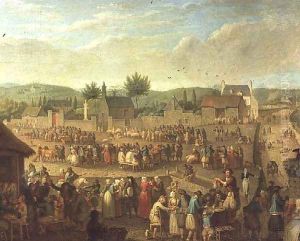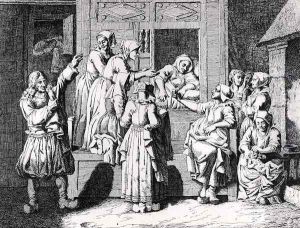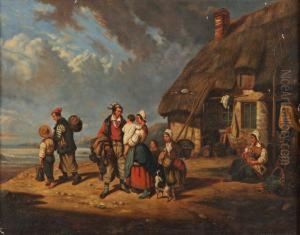Olivier Perrin Paintings
Olivier Perrin was a French artist born on April 21, 1761, in Rennes, Brittany. His artistic journey began in his hometown, but his ambition and talent soon led him to Paris, where he furthered his studies and honed his skills. Perrin was primarily known for his work as a painter and engraver, contributing significantly to the artistic landscape of France during the late 18th and early 19th centuries. Despite the turbulent times marked by the French Revolution and the Napoleonic Wars, Perrin managed to navigate his career through this epoch, leaving behind a legacy that is still appreciated today.
Perrin's body of work includes a variety of subjects, ranging from historical scenes and portraits to genre paintings that capture the everyday life of his time. His style was influenced by the neoclassical movement, which was predominant during his formative years, yet he also incorporated elements that were uniquely his own, adapting to the changing tastes of the era. Among his notable works are illustrations for books and journals, which helped disseminate his art beyond the confines of galleries and the homes of private collectors.
Throughout his career, Perrin was recognized for his artistic achievements. He became a member of various art societies and received commissions from prominent figures of his time. Despite these successes, his name is not as widely known today as some of his contemporaries, a fate not uncommon among artists of his period. Olivier Perrin died on March 15, 1832, in Paris. His works, however, continue to be studied and admired, offering insights into the cultural and social dynamics of France during a pivotal period in its history. Perrin's contributions to French art are preserved in museums and collections, where they remain a testament to his skill and artistic vision.


